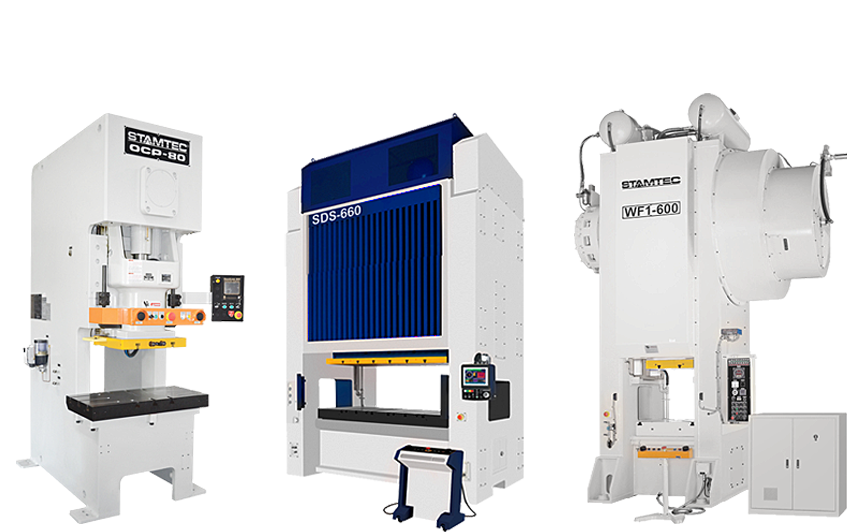
Mechanical Presses are the workhorses of the manufacturing world, producing millions of parts for a wide range of critical applications. Here’s a deep dive into the world of mechanical presses.
How does a mechanical press work?
Powered by an electric motor, a flywheel is engaged by a clutch and brake, driving a gear train that transmits the power to the crankshaft, which moves the press slide up and down. The motor then restores the energy to the flywheel, and the process begins again. The flywheel’s mass and speed determine the working energy of the press.
What are the advantages of using a mechanical press?
Mechanical presses are relatively inexpensive. Other advantages include fast production rates, very repeatable action with precision accuracy, and simple set-up and operation.
What applications are best suited to mechanical presses?
Mechanical presses are frequently used for flat to medium-depth drawn parts, like automotive, appliance and hardware components.
What are the basic types of mechanical presses?
There are two main types: gap frame presses (also called C-frame presses) and straight side presses.
What are the benefits of using a gap frame press?
Gap frame presses work well with smaller dies and provide easier access around the die.
What are the benefits of using a straight-side press?
Offering greater rigidity and not as much deflection, straight side presses provide higher accuracy and are usually more suitable for progressive die work.
What production rates are possible with mechanical presses?
Compared to hydraulic presses and servo presses, traditional mechanical presses can achieve the greatest production speeds, up to 1,000+ strokes per minute.
What materials are best suited for mechanical presses?
Mechanical presses can stamp/form nearly any type of metal. However, when speed becomes a critical issue, especially during the working portion of the stroke, a servo press may be a better solution – e.g. for drawing, extruding or coining or for exotic materials that are hard to form or have a lot of snap-through or spring-back, like HSLA (high strength, low alloy) steel.
What tonnage range are mechanical presses available in?
We stock presses from 25 to 600 tons and can custom build presses up to 3,000 tons.
What type of drive systems are available for mechanical presses?
Stamtec presses use a variety of drive arrangements depending on application requirements. Options include:
A variety of link motion drives are also available to enhance and expand our mechanical presses’ capabilities (e.g. knuckle-joint , draw link, progressive die link, and vertical).
Can Stamtec provide a fully automated press line incorporating mechanical presses?
Yes, we offer a full range of peripheral equipment, including coil handling/feeding, and quick die change systems. We also routinely work with other equipment manufacturers to provide the best solution or the customer’s choice in transfer systems, coiling handling/feeding, quick die-change systems, conveyors, etc.
What are the critical specifications needed to identify the right press for an application?
To design the best mechanical press for your application, we need to know:
Stamtec has all the answers to your mechanical press questions. Contact us today for assistance.